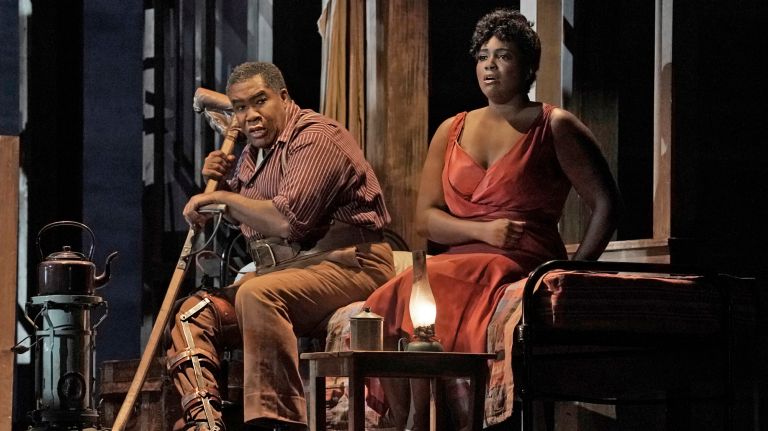
‘Porgy and Bess’ runs at the Metropolitan Opera through Feb. 1. 30 Lincoln Center Plaza, metopera.org.
A new production of “Porgy and Bess” provides a new opportunity to wrangle with the issues that have dogged the world-famous work since its 1935 Broadway premiere.
Is the show — which has music by George Gershwin and lyrics by DuBose and Dorothy Heyward and Ira Gershwin — an opera, a musical, or something in between? How is it that so many of its songs have been covered by famous artists and become American songbook standards? Should it still be produced despite its incorporation of crude racial stereotypes and often ridiculous dialect? Can and should it be revised? Should Porgy stand or sit? And the list goes on …
The Metropolitan Opera has opened its season with a new staging of “Porgy and Bess,” which is coproduced with the Dutch National Opera and English National Opera and marks the first time it has been performed at the Met in nearly three decades.
In 2012, “Porgy and Bess” received a sharply divisive, Tony-winning Broadway revival/revisal starring Audra McDonald and Norm Lewis, which incorporated major textual changes devised by playwright Suzan-Lori Parks and director Diane Paulus.
Set in the working-class, African American community of Catfish Row in 1920s Charleston, S.C., “Porgy and Bess” observes the unlikely romance between the physically disabled beggar Porgy (Eric Owens, physically imposing, vulnerable and in rich voice) and the drug-addicted, sexually-abused Bess (Angel Blue, tough but stiff), who has long endured the attention of the brash bully Crown (Alfred Walker) and the sleazy drug pusher Sportin’ Life (Frederick Ballentine).
Throughout, members of the Catfish Row community are observed in moments of levity, such as an island picnic and a dice game, as well as serious struggle — enduring a hurricane, being targeted by police officers and in mourning.
The Met’s new production, which is directed by James Robinson and runs a bit over three hours, makes for a straightforward, competent and culturally circumspect rendering of a complex, controversial and historically significant work.
An effort was clearly made to portray the title characters with as much dignity as possible. Rather than sit, Porgy walks with a crutch. In a banner created by Kerry James Marshall that hangs outside the opera house, Porgy is made to resemble an action hero, carrying his crutch like a sword and carrying Bess on his shoulders.
Dynamically conducted by David Robertson and vocally supported by a 60-member African American chorus, the production is as musically satisfying as it gets. The score remains fresh and invigorating, with traditionally operatic segments combined with crowd-pleasing solos and duets, jazz, spirituals, dance rhythms and turbulent symphonic eruptions.
Scenically, it is dominated by a large tenement structure (designed by Michael Yeargan) which revolves to reveal different angles and locations, including a courtyard and Porgy’s room. Another visual boost comes from the full-bodied, expressive dance choreography of Camille A. Brown (“Once On This Island”).
Unlike the vast majority of shows in the Met’s repertory, “Porgy and Bess” is just as appealing to theatergoers as operagoers, making this an ideal occasion for many to revisit — or perhaps make an introductory visit — to the opera house.
































